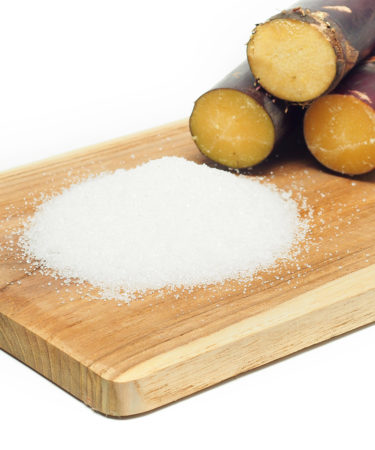Not too long ago, we talked about dosage—the addition (in Champagne or sparkling wine) of a bit of sugar to the final product to determine sweetness levels. It was actually surprising to realize that within all the refinements and rustic precision of sparkling wine production, something so simple as a spoonful of sugar might have a necessary place in the quality of the final product. Lesson learned.
However, we definitely had no idea this was the case for rum. Like corn-heavy bourbon, sugar cane-derived rum is a perceptibly “sweeter” spirit. And like bourbon, it’s often described with terms that might fit on a dessert menu: caramel, fig, banana, tropical fruit, vanilla, brown sugar, the list goes on. But we always thought these were just perceptions of flavor that suggested sweetness, especially since no actual sugar can make it through the distilling process. As with bourbon, distilled rum is theoretically sugar-free. Best diet ever! (Kidding. Don’t do that.)
Here comes the mind-blown/the-more-you-know moment: “finished” rum is not necessarily sugar free, including many rums you know and love. That’s right, rum can actually have a dosage all its own—a small amount of sugar that’s added to the finished product to achieve a desired flavor profile. (Rum production, not universally regulated, allows for the addition of caramel coloring as well; as with whiskey, it’s goal is to achieve a consistent, desirable product appearance.)
In most cases, rums with sugar added to them are on the darker end of the spectrum. Light rums, produced more often in countries with Spanish influence, are intended to have lighter, dryer bodies—more mixable, malleable. Dark rums, generally produced in countries with French or English influence, are where sugar addition would “make sense,” the darker flavor profile being more redolent of molasses, vanilla, tropical fruit, etc.
Rum companies in the U.S. don’t advertise calorie counts or sugar content, of course. But a forum on “sweet” rums on RefinedVices.com presents some info courtesy of Finnish and Swedish governments (by way of Facebook), with grams of sugar per liter of many well-known brands of rum. Egregious offenders include Eldorado 12 year (with 45 grams per liter?) and Ron Zacapa, at 41 grams. About as much sugar as you’d get in a can of Coke.
As commenters argue in the forum (remember, these are rum lovers, generally savvy to market trends), the addition of sugar is likely bad for rum—not a necessary corrective, per se, but an easy way to create the expected impression of “sweetness” in a lower quality rum. Imagine taking a lighter rum that you don’t bother to oak-age very much and just “correcting” it with caramel and sugar. (Being able to skip steps is clearly enticing in the spirits industry.)
If rum were more universally regulated, there might be a way to approach the situation. But given that rum kind of works on the archipelago system, with each country governing its own production methods, it’s unlikely the “to sweeten or not to sweeten” question will find universal resolution.
Not that this impeaches the overall quality of a rum you know and love. Just remember, next time you polish off a tumbler of 23 year, you might wanna brush your teeth.
